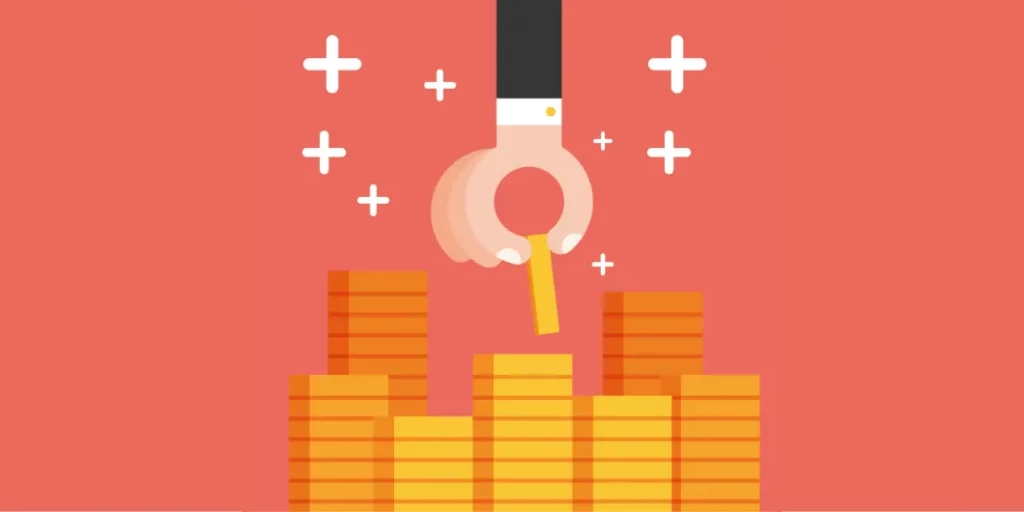What is the Margin in Futures Trading?
In simple terms, margin is the money you deposit with your broker when you open and maintain a futures position. Unlike in stock trading, where you might borrow money to buy shares, margin in futures trading isn’t about taking on debt. It’s more like a deposit to make sure you can cover any potential losses on your trades.
A Simple Example of Margin in Futures Trading
Imagine you’re a fruit trader who wants to secure a future supply of apples. You enter into a futures contract to buy 1,000 apples at $1 each. The total value of this contract is $1,000. In futures trading, you don’t pay the full $1,000 upfront. Instead, you deposit a smaller amount, known as the initial margin, which acts as a good-faith deposit to ensure you can fulfil the contract.
Let’s say the initial margin is $100. The price of apples fluctuates due to market conditions:
Price Increase
If the price of apples rises to $1.20 per apple, the value of your contract increases to $1,200. Your position has gained $200.
Price Decrease
If the price drops to $0.80 per apple, the value of your contract decreases to $800, and your position has lost $200.
If the value of your position declines and your account equity falls below a certain level, known as the maintenance margin, you may receive a margin call. You must deposit additional funds to return your account to the initial margin level.
For example, if the maintenance margin is set at $75 and your account equity drops to $50 due to a decrease in apple prices, you’d need to deposit an additional $50 to meet the margin requirement.
The Two Types of Margin
Initial Margin
The amount you must deposit beforehand to initiate a futures transaction (remember the fruit example). The actual price varies based on the risk involved in the given contract.
Maintenance Margin
This is the minimum balance you need to keep in your account after opening your position. If your balance dips below this level, the broker will request more funds to keep your position open.
How Margin Works in Futures Trading
When you enter a futures contract, you need to meet the initial margin requirement. For example, if a futures contract is worth $100,000, and the initial margin requirement is 5%, you’d need to put up $5,000 to open that position.
Once you’re in the trade, the maintenance margin comes into play. You need to maintain this minimum balance to keep your position active. If your balance approaches or falls below this level due to market fluctuations, you will receive a margin call asking you to deposit more funds to prevent your position from closing automatically.
Why It’s Important to Manage Your Margin
Managing your margin correctly is key for several reasons:
Reducing Risk
The more you manage your margin wisely, the better you can control your risk. You can limit potential losses by adjusting your position size to match your available margin.
Avoiding Forced Liquidation
If you don’t keep enough margin, your position might be closed at a bad price. By closely monitoring your margin, you can avoid this and keep your position intact.
Understanding Leverage
While leverage can increase your profits, it also increases your risk. You need to balance how much leverage you use with your margin so you’re not overexposed to risk.
Margin Management Tips
These tips will help you with your margin:
1. Know Your Risk Tolerance
Before starting any deal, think about how much risk you are ready for. Your personal comfort level with possible losses and your available margin should coincide in your position size. This self-awareness allows you to make wise selections that fit your risk tolerance and financial circumstances.
2. Enforce Stop-Loss Orders
Consider using stop-loss orders to protect yourself from major losses. These orders automatically close your trade if the market moves against you beyond a certain point. This way, you can stay in control of your trades and limit potential losses.
3. Diversify Your Portfolio
You can spread your investments among several assets to help your whole portfolio be less impacted by a bad performance position. Diversification serves as a buffer, lowering the risk connected with any one investment.
4. Use Leverage Cautiously
Leverage should be used sparingly as it may multiply your gains and losses. It’s advisable to be wary and modify use depending on risk tolerance.
Why ICRYPEX Could Be a Good Fit for You
ICRYPEX provides over 220 trading pairs and over 120 cryptocurrencies, including Bitcoin (BTC), Ethereum (ETH), and several altcoins, making it a great place to diversify your portfolio.
New Instruments and Tools
From real-time charts to market research tools, ICRYPEX provides the means to make wise decisions and carry out transactions successfully.
Margin Trading and Leverage
ICRYPEX provides margin trading so you can utilize leverage to increase your returns. Remember that using leverage can also result in losses, so use it carefully.
User-Friendly Platform
ICRYPEX provides helpful tips and tutorials to guide you as you start and improve your trading journey.
User-Friendly Platform
ICRYPEX provides helpful tips and tutorials to guide you as you start and improve your trading journey.
With the right tools from ICRYPEX and careful margin management, you can trade futures with more confidence and effectively manage your risks. You can start trading with ICRYPEX Futures right now and profit from the opportunities you foresee.
